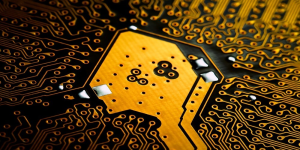Guide to PCB Manufacturing: From Design to Production?
The process of designing and manufacturing printed circuit boards (PCBs) can be complex and time-consuming, but it’s a crucial step in building electronic devices. PCBs are essential components of modern electronics, providing connections between electronic components and controlling the flow of electricity. To ensure that a PCB functions correctly, it’s important to understand the steps involved in its design and production. In this blog, we’ll provide a comprehensive guide to PCB manufacturing, covering everything from the initial design phase to the final production of a high-quality PCB. So, whether you’re a professional electronics engineer or a hobbyist looking to build your own electronic devices, this guide will take you through the essential steps of PCB manufacturing.

Designing and manufacturing a printed circuit board (PCB) involves several key steps. Here’s a guide that takes you through the entire process, from initial design to production:
- Define Project Requirements:
Clearly outline your project requirements, including functionality, size constraints, and budget.
- Schematic Design:
Create a schematic diagram using a tool like KiCad, Eagle, or Altium.
Define components, connections, and their electrical characteristics.
- PCB Layout Design:
Use the schematic to create the physical layout of the PCB.
Place components strategically for optimal signal integrity and thermal management.
Route traces carefully, considering signal integrity and avoiding crosstalk.
- Design Rule Check (DRC):
Run a DRC to ensure your design complies with the manufacturing capabilities of your chosen PCB fabrication house.
- Generate Gerber Files:
Export Gerber files containing all the necessary information for manufacturing.
Include layers such as copper, solder mask, and silkscreen.
- Bill of Materials (BOM):
Create a detailed BOM listing all components, their specifications, and quantities.
- Prototype and Testing:
Before full-scale production, create a prototype to test the functionality of your design.
Identify and resolve any issues through testing and iteration.
- Choose a PCB Manufacturer:
Select a reputable PCB fabrication house based on your project requirements, budget, and location.
- Submit Files and Get Quotes:
Submit your Gerber files and BOM to the chosen manufacturer.
Obtain quotes and review them, considering factors like lead time and production volume.
- PCB Fabrication:
Once satisfied with the quote, approve it and initiate the fabrication process.
Fabrication involves etching copper layers, applying solder mask, and silk screening.
- Component Procurement:
Order components from suppliers based on the BOM.
- Assembly:
PCB assembly involves placing components on the board and soldering them.
This can be done manually or using automated pick-and-place machines.
- Quality Control (QC):
Perform thorough quality control checks, including electrical testing, to ensure the assembled PCBs meet specifications.
- Packaging and Shipping:
Package the finished PCBs securely to prevent damage during shipping.
Coordinate with the manufacturer for shipping logistics.
- Documentation and Future Revisions:
Document the manufacturing process, including any modifications or improvements.
Keep records for potential future revisions or updates.
- Compliance and Certification:
Ensure that your PCB complies with relevant industry standards and obtain any necessary certifications.
Conclusion
PCB manufacturing is a complex process that requires careful planning, clear communication, and the use of the right tools and techniques. By understanding the key steps involved, from design to production, electronics professionals and hobbyists alike can ensure that their PCBs are of the highest quality and function correctly.
As modern electronics continue to evolve, there will likely be new advancements and innovations in PCB manufacturing. However, the importance of quality control, testing, and collaboration between engineers, designers, and manufacturers will remain critical in the development of electronic devices.

